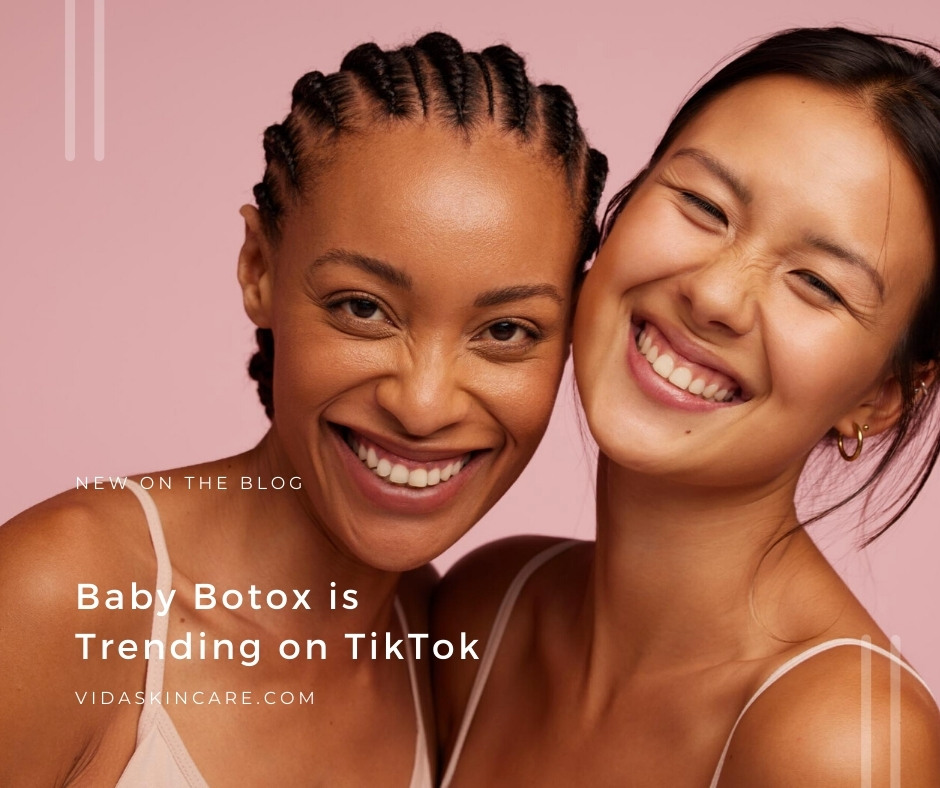Botox has been around for decades and remains the gold standard for stopping wrinkles with minimal invasion. It’s also one of the most-requested treatments at VIDA, often paired with dermal fillers. The injectable has also become increasingly popular with men, and the American Society of Plastic Surgeons estimates that 250,000 men got Botox in 2020. That’s still far less than the estimated 4 million women, but it’s progress. However, the increase in men opting for Botox is just one trend—baby Botox is another.
Baby Botox is a low-dose Botox treatment. The topic went viral on TikTok and was also covered by the Washington Post. Millennials and Gen-Z are using this approach as a preventative measure rather than to strictly treat existing wrinkles. Right now, there are no peer-reviewed studies on low-dose or baby Botox, but of course there are plenty of studies on Botox in more “normal” doses. So, should you try baby Botox?
Less is More
Botox is an injectable, with the main active ingredient being botulinum toxin type A. It temporarily stops muscles from contracting and, in turn, stops wrinkles, creases, and furrows from showing. A repeated muscle movement, such as lifting your eyebrows, can lead to dynamic wrinkles over time. Typically, most people start out getting about 20 units of Botox for a “regular” treatment, with injections often happening between the brows, on the forehead, and/or the crow’s feet. This number quickly increases to 30 – 40 units on average by the time someone is well into their 30s. However, baby Botox can use as little as 10 units.
Unsurprisingly, baby Botox is most often recommended for those in their 20s and early 30s. These clients might just be starting to notice fine lines and want to keep them from becoming more pronounced and dynamic—or static. Dynamic wrinkles happen when someone is showing an emotion, such as laugh lines. However, static wrinkles are present even when the face is passive and neutral. Usually, people want to prevent static wrinkles entirely and perhaps subdue dynamic wrinkles. Simply put, baby Botox is more preventative while regular Botox is corrective. Baby Botox can also be used as a stepping stone for those new to Botox. Paralysis from Botox lasts longer than baby Botox, making the baby version a great way to test the waters.
Botox for Confidence
On average, regular Botox lasts 3 – 6 months depending on the number of units used and injection site. Baby Botox lasts much less time, so it’s going to require more maintenance and repetitive injections. However, be realistic and remember that aging is a natural process that will still happen. We get wrinkles for numerous reasons, including loss of collagen and skin elasticity due to age, sun damage, genetics, and more. You can double down on slowing the aging process by combining Botox with fillers as well as collagen induction therapies like microneedling. It’s possible to “tell” the body to start producing more collagen and where, which can enhance and extend the results of Botox.
When it comes to risks of baby Botox, it’s similar to regular Botox. You might see temporary, mild swelling at the injection site or light bruising. Headaches may happen in the next 24 hours after the injections. You should still follow best practices for aftercare, such as avoiding sweating or lying down for a few hours after your injections. Otherwise, there is virtually no downtime. Clients return directly to their daily lives after injections of regular and baby Botox.
Are You a Botox Baby?
If you’re younger or new to Botox, baby Botox might be for you. Even those with more pronounced wrinkles can test out the results of Botox without having to “commit” to a few months of targeted muscle paralysis. We’ll work with you to determine the approach that’s right for you. You can also use baby Botox to achieve a lip flip or slightly enhance the arch of the eyebrows. A consultation is the best way to figure out your unique gameplan, and consults are always complimentary at VIDA. Call today to schedule yours or simply complete the online contact form for the quickest response.




